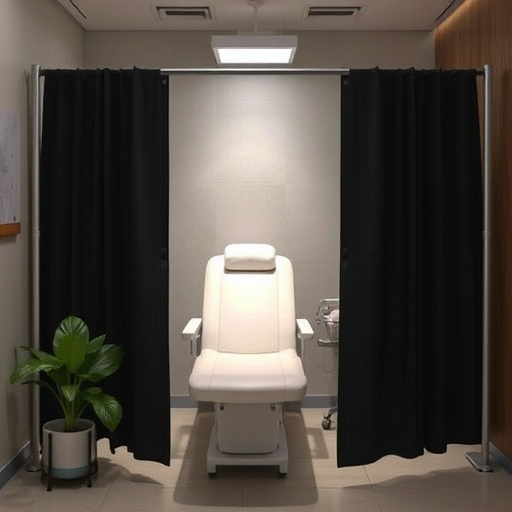The Injen Evolution Air Intake Advanced System is a cutting-edge automotive component designed to optimize engine performance through innovative heat shield technology. Using advanced materials and engineering, it creates a robust barrier against heat, allowing for the efficient intake of cool, dense air. This system enhances engine power, torque, and fuel efficiency while ensuring seamless integration into various vehicle models. Rigorous testing using tools like computational fluid dynamics (CFD) and thermal imaging ensures optimal performance, safety, and fuel economy. The Injen Evolution represents a significant leap in automotive engineering, contributing to eco-friendly transportation with increased horsepower and future innovations tailored to diverse vehicle architectures.
“Uncover the secrets behind efficient heat shielding with our comprehensive guide. We explore the cutting-edge Injen Evolution Air Intake Advanced System, a prime example of revolutionary technology. This article delves into the science behind heat shield effectiveness, dissecting testing methods and performance metrics. From laboratory assessments to real-world applications, we unravel the evolution of heat shielding, including future innovations set to redefine the automotive industry. Discover how advanced systems like Injen’s are shaping the future of engine performance.”
- Understanding Heat Shield Technology: The Injen Evolution Air Intake Advanced System
- Assessing Heat Shield Effectiveness: Testing Methods and Metrics
- Optimizing Performance: Real-World Applications and Future Innovations in Heat Shielding
Understanding Heat Shield Technology: The Injen Evolution Air Intake Advanced System

The Injen Evolution Air Intake Advanced System is a prime example of modern heat shield technology, designed to optimize engine performance while ensuring optimal air flow. This cutting-edge system utilizes advanced materials and innovative engineering to create a robust barrier against heat, allowing for more efficient intake of cool, dense air. By effectively reducing heat transfer, the Injen Evolution enhances engine power, torque, and fuel efficiency.
This advanced heat shield technology is meticulously crafted to fit various vehicle models, ensuring seamless integration into existing systems. Its unique design not only protects the air intake from high temperatures but also reduces backpressure, promoting better breathing and smoother performance. This makes it a popular choice among car enthusiasts seeking both enhanced engine capabilities and improved overall driving experience.
Assessing Heat Shield Effectiveness: Testing Methods and Metrics

When assessing the effectiveness of a heat shield, understanding the various testing methods and metrics is key. These assessments are crucial for ensuring optimal performance and safety in extreme conditions. Modern technologies like computational fluid dynamics (CFD) simulations offer precise predictions of heat transfer and flow patterns around components. Additionally, real-world testing in controlled environments or on actual vehicles allows for validation of models and identification of potential weaknesses.
In the case of advanced automotive components such as Injen Evolution air intake systems, specialized tests like thermal imaging and infrared photography provide visual representations of heat distribution. Metrics such as temperature drop across the shield, surface temperatures, and overall heat flux are measured to quantify performance. These data points help engineers refine designs, ensuring that heat shields not only protect critical parts but also maintain efficient engine operation and fuel economy.
Optimizing Performance: Real-World Applications and Future Innovations in Heat Shielding

In the realm of automotive performance, optimizing engine efficiency is a constant pursuit, and this is where innovative solutions like the Injen Evolution air intake system come into play. By advanced design and engineering, this heat shield not only reduces temperature spikes in the intake manifold but also enhances overall engine performance. Its effectiveness has been proven in real-world applications, showcasing improved horsepower and torque output, especially in high-performance vehicles.
Looking ahead, future innovations in heat shielding technology promise to take this a step further. Advanced materials science is driving the development of lighter, more durable heat shields capable of withstanding extreme temperatures. Moreover, these emerging technologies aim to offer customizable solutions, catering to diverse vehicle architectures and powerplant configurations. Such advancements will not only contribute to enhanced engine performance but also enable designers to create more efficient, eco-friendly automotive systems, pushing the boundaries of what’s possible in the ever-evolving transportation landscape.
The Injen Evolution air intake advanced system showcases the evolving role of heat shield technology, demonstrating its effectiveness through rigorous testing methods and metrics. As we look towards future innovations, optimizing performance in real-world applications will continue to drive advancements in heat shielding, ensuring safer and more efficient operations across various industries. By understanding and leveraging these developments, we can expect continued improvements in heat shield effectiveness, benefitting both technological capabilities and environmental sustainability.














